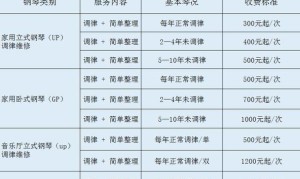Title: Enhancing Educational Websites with CSSCI Standards
In the realm of educational websites, adherence to CSSCI (Chinese Social Sciences Citation Index) standards can significantly enhance credibility, accessibility, and user experience. CSSCI serves as a benchmark for academic excellence in China, and integrating its principles into educational websites can elevate their quality. Let's explore how educational websites can align with CSSCI standards:
1. Content Quality and Integrity
Authenticity
: Ensure that all content presented on the website is accurate, uptodate, and supported by credible sources. Avoid misinformation or unsubstantiated claims.
Scholarly Rigor
: Emphasize academic rigor in content creation, adhering to established research methodologies and citing authoritative references.
Language Clarity
: Use clear and concise language to convey complex ideas, facilitating comprehension for a diverse audience.2. User Interface (UI) Design
Accessibility
: Design the website with accessibility in mind, ensuring that all users, including those with disabilities, can navigate and interact with the content seamlessly.
Responsive Design
: Implement responsive design principles to optimize the website for various devices and screen sizes, enhancing user experience across desktops, tablets, and smartphones.
Intuitive Navigation
: Organize content logically and implement intuitive navigation menus to help users locate information efficiently.3. Visual Presentation
Consistent Branding
: Maintain consistent branding elements, such as color schemes, typography, and logos, to reinforce the website's identity and credibility.
Visual Hierarchy
: Utilize visual hierarchy techniques to prioritize important content elements and guide users' attention effectively.
Multimedia Integration
: Incorporate multimedia elements, such as images, videos, and infographics, to enrich the learning experience and engage users visually.4. Citations and References
Proper Citation Format
: Follow standardized citation formats, such as APA or MLA, for referencing scholarly works and external sources cited within the content.
Bibliographic Information
: Include comprehensive bibliographic information for all cited references, allowing users to verify and explore the cited sources independently.
CrossReferencing
: Implement crossreferencing functionalities to facilitate navigation between related content and cited references within the website.5. Interactive Features
Engagement Tools
: Integrate interactive features, such as quizzes, forums, and discussion boards, to foster active learning and community engagement among users.
Feedback Mechanisms
: Provide avenues for users to submit feedback, ask questions, and engage in discussions with educators and peers, fostering a collaborative learning environment.
Personalization Options
: Offer customization options, such as user profiles and personalized recommendations, to cater to individual learning preferences and interests.By aligning educational websites with CSSCI standards, institutions and educators can uphold academic integrity, enhance user engagement, and contribute to the advancement of scholarly discourse in the digital age. Incorporating these principles into website development and content creation processes can yield profound benefits for both learners and educators alike.






 京公网安备11000000000001号
京公网安备11000000000001号 京ICP备11000001号
京ICP备11000001号